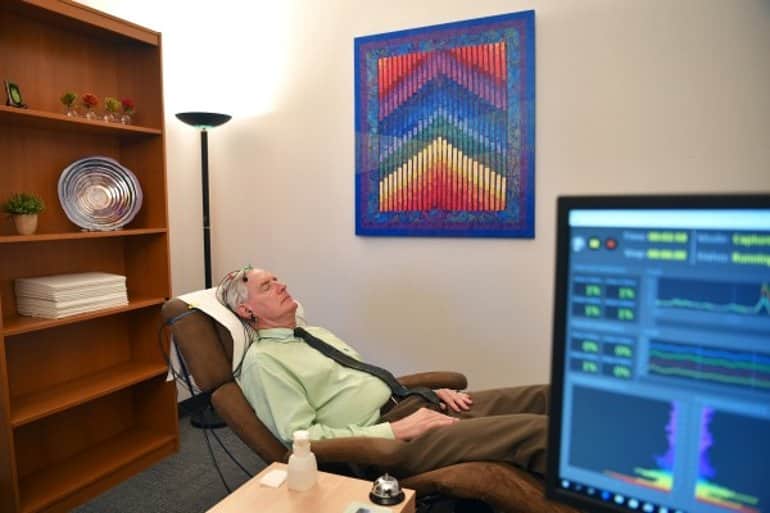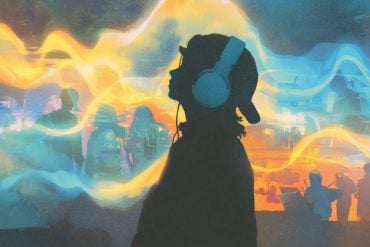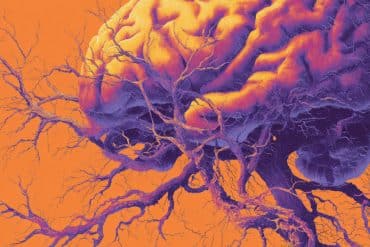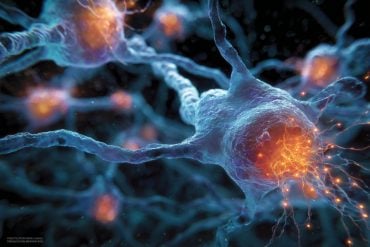Summary: A new closed-loop, acoustic stimulation technique significantly improves sleep quality and autonomic immune system function, and reduces symptoms of insomnia.
Source: Wake Forest University
A good night’s sleep is crucial to health and well-being. Numerous research studies have shown that insomnia can increase the risk of cardiovascular events, obesity, diabetes and other illnesses.
Now, a new study from researchers at Wake Forest University School of Medicine shows significant improvements in not only sleep quality, but also in improved autonomic nervous system function using a closed-loop, acoustic stimulation neurotechnology.
The study is published online in Global Advances in Integrative Medicine and Health.
Cereset ResearchTM with Standard Operating Procedures (CR-SOP) is the evolution of HIRREM®, or high-resolution, relational, resonance-based electroencephalic mirroring, a noninvasive, closed-loop technology that uses scalp sensors to monitor brainwaves and software algorithms to translate specific frequencies into audible tones of varying pitch.
These tones linked to brainwaves are echoed back in real time via earbuds. This allows the brain a chance to listen to itself, to look at itself in an acoustic mirror.
“CR-SOP allows the brain to reset from stress patterns that contribute to insomnia,” said Charles H. Tegeler, M.D., chair of neurology at Wake Forest University School of Medicine. “During the intervention, the brain continuously updates with respect to its own activity patterns, resulting in auto-calibration or self-optimization.”
While still echoing brainwaves, as with legacy HIRREM, CR-SOP uses an updated platform with faster computers, new sensors and hardware, and computer management during the protocols. This results in faster echoing of brainwaves, shorter sessions and reduced dependence on technologist expertise.
In this randomized and controlled study of 22 adults, researchers compared changes on the Insomnia Severity Index (ISI), a self-report instrument to assess insomnia symptoms. About half of the participants received 10 sessions of CR-SOP linked to brainwaves while the control group received 10 sessions of randomly generated auditory tones. Sessions were received over a mean of 15.3 days. Researchers also recorded heart rate and blood pressure to assess autonomic cardiovascular regulation.
After completion of the sessions and at follow-up visits up to six weeks later, subjects in the CR-SOP group reported reduced insomnia symptoms. They also showed statistically and clinically significant improvements in autonomic function across multiple measures such as heart rate variability (HRV) and baroreflex sensitivity (BRS) compared to those who received random tones.
HRV is a powerful biometric that reflects the health of the autonomic nervous system, and BRS measures blood pressure regulation. HRV is correlated with a host of important health and well-being outcomes.

These findings are in line with previous HIRREM research that showed a reduction in insomnia symptoms.
According to Tegeler, the study also used standard operating procedures so that all subjects received the same sequence of protocols. Taken together, this greatly increases the scalability of this approach so that more people might have access, more quickly, he said.
“Closed-loop acoustic stimulation can improve sleep as well as autonomic function in those who suffer from insomnia,” Tegeler said. “This pilot study demonstrates these benefits with CR-SOP from sessions received over a short period. This is also an important step in showing the intervention’s potential scalability for treating more people.”
Ongoing clinical trials are focused on stress and anxiety in health care workers as well as caregivers.
HIRREM and Cereset Research are registered trademarks of Brain State Technologies based in Scottsdale, Arizona and have been licensed to Wake Forest University School of Medicine for collaborative research since 2011.
Funding: This study was supported by research grants from The Susanne Marcus Collins Foundation Inc. and the Wake Forest Clinical and Translational Science Institute.
About this neurotech research news
Author: Myra Wright
Source: Wake Forest University
Contact: Myra Wright – Wake Forest University
Image: The image is credited to Wake Forest University
Original Research: Open access.
“Cereset Research Standard Operating Procedures for Insomnia: A Randomized, Controlled Clinical Trial” by Catherine L. Tegeler et al. Global Advances in Integrated Medicine and Health
Abstract
Cereset Research Standard Operating Procedures for Insomnia: A Randomized, Controlled Clinical Trial
Background
Interventions for insomnia that also address autonomic dysfunction are needed.
Objective
We evaluate Cereset Research™ Standard Operating Procedures (CR-SOP) in a pilot randomized, controlled trial. CR-SOP is a less operator-dependent, more generalizable innovation of HIRREM®, a noninvasive, closed-loop, allostatic, acoustic stimulation neurotechnology demonstrated to improve insomnia and autonomic function.
Methods
Adults with Insomnia Severity Index (ISI) scores of ≥8 were randomized to receive ten sessions of CR-SOP, with tones linked to brainwaves (LB, intervention), or a sham condition of random tones not linked to brainwaves (NL, control). Measures were collected at enrollment and 0-14 days and 4-6 weeks post-allocated intervention. The primary outcome was differential change in ISI from baseline to 4-6 weeks post-intervention. Secondary self-report measures assessed sleep quality65 and behavioral outcomes. Ten-minute recordings of heart rate and blood pressure were collected to analyze autonomic function (heart rate variability [HRV] and baroreflex sensitivity).
Results
Of 22 randomized, 20 participants completed the allocated condition. Intention to treat analysis of change from baseline to the 4-6 week outcome demonstrated mean ISI score reduction of 4.69 points among controls (SE 1.40). In the intervention group, there was an additional 2.58 point reduction in ISI score (SE 2.13; total reduction of 7.27, P = .24). Sleep quality and some measures of autonomic function improved significantly among the intervention group compared to control.
Conclusions
This pilot study compared use of a standardized, allostatic, acoustic neurotechnology intervention with a sham, active control condition. The magnitude of change in insomnia severity was clinically relevant and similar to the findings in a prior, fully powered trial, but the differential improvement observed was not statistically significant. Significant improvements were demonstrated in sleep quality and some autonomic function measures.







